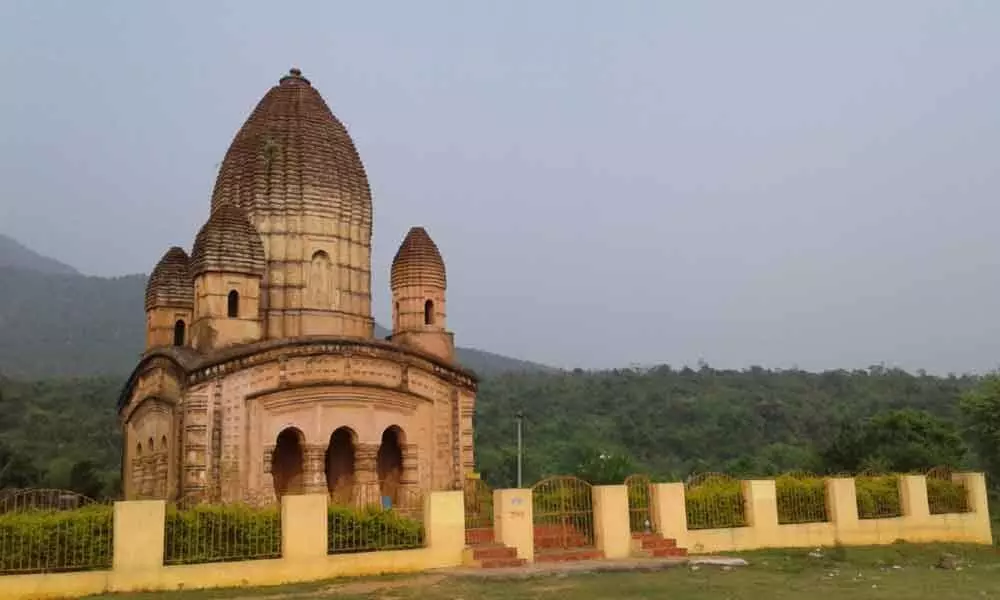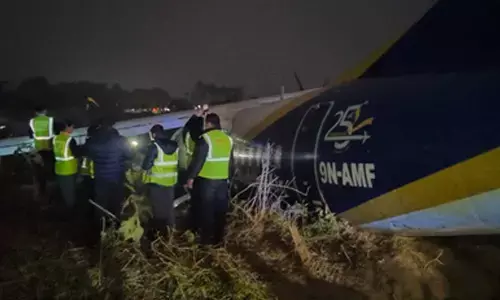Garhpanchkot, best Holiday spot with conical green-carpeted hill
Garhpanchkot located about 280 kms from Kolkata is a treasure trove of forgotten history amongst awe-inspiring natural beauty...
Imagine a conical green-carpeted hill majestically perched alone amidst the serene wilderness and dotted with ruins of a rich past. Imagine a walk-through jungle of 'Sal', 'Tamal', 'Sonajhuri', 'Palas' accompanied by the aroma of wildflowers and the gentle rustle of leaves.
If this is your idea of a holiday, then Garhpanchkot located about 280 kms from the city of Kolkata is just the place to go – a treasure trove of forgotten history amongst awe-inspiring natural beauty. Tucked in a remote pocket of rural Bengal, the lush green landscape, verdant hills and dense forests make it a perfect destination for city-weary dwellers. This place had been on my radar for a long time, so I never thought twice before choosing this quick leisure break once I was in Kolkata.
The drive from Kolkata was long but not at all tiring because of the smooth roads. However, the last few kilometres were different – narrow country roads meandering through a collage of tribal village life. A lone hill loomed majestically in the distance.
"That is the Panchet Hill from which Garpanchkot got its name," our driver, who was a local and hence eager to play the role of our tour guide, commented. From him, we got to know...
In the 18th century, Garhpanchkot was a part of the Singh Deo dynasty of Panchakot. Alivardi Khan the then Nawab of Bengal sought the help of Maratha Rulers, Raghoji Bhonsle for defending his kingdom. A Maratha cavalry sent by Bhosle entered Bengal through Panchet and started looting the countryside. For about a decade they looted and plundered Bengal. During one such encounter, Garpanchkot was attacked by the Marathas and, having defeated the King's guards, they destroyed it after looting and plundering the palace. It is believed that all the 17 wives of the king committed suicide in a nearby well during the attack. Garhpanchkot has lain in ruin ever since – a scattered group of ruined temples still standing as mute spectators of the rise and fall of a once glorious dynasty.
It was a quiet pre-winter afternoon when we reached Garpanchkot. The place does not see much footfall because of which we had the place mostly to ourselves. The ruined temples were scattered all over the place and only one – the principal one has been restored as of date by ASI. This is a five pinnacle 'Pancharatna' temple and still carries some depleted but exquisite piece of terracotta work on its arches and pillars.
A bit uphill from the main ruins of the Garhpanchkot is located a 'Dhara', a perennial spring channelled through a 'cow mouth' made of stone. We decided to visit it and embarked on a serpentine uphill track cutting through the jungle. The remnants of the forts and the temples still remain scattered across the jungle and were visible amidst the greenery. A local old woman, who lived in one of the nearby tribal villages volunteered to lead us to the spot. During the walk, she spoke of the flow of life in her villages and we got to know-how for the tribal populations dependent on rainfall to support their life-sustaining agriculture and forestry, existence had become extremely difficult. Most of the men in the villages had left their families to search for work in the neighbouring town, leaving only the women to look after the families. This seasonal migration added to the burden of the tribal women, now responsible for food production, as well as the welfare for other members of the family.
As we climbed higher, the vast expanse of rolling hills and verdant green forests turned out to be extremely soothing for our tired minds and body. In the quietness of the surroundings, we could feel the uncanny history that lies buried in depths of this dense forest. We reached the top and from there, wow! What a view! The Damodar River flowing at the base of the hill looked like a serpentine silver thread, snaking across the huge expanse of the plains of Bengal. A ruined temple lay to our right, from which (we were told) emerged the stream in search of which we had trekked all the way to the top. However, as the insides were covered with thick undergrowth of trees, we decided not to venture inside the temple.
Sunrise and sunset are truly a spectacular mirage observed from the nearby Panchet Dam. The short drive to Panchet Dam took us around 10 mins from the ruins. The serene valleys surrounding Panchet combined with a blend of water and the ever-expanding horizon gave a stark contrast to the uniformity all around. Sunset was a spectacular sight as the fiery ball dipped into the western shores of the lake, streaking the water and sky with a riot of colours. Gushes of wind swept across creating ripples and as the birds migrate in the evening sky; I was easily reminded of nature's vastness.
Garhpanchkot is an ideal mix of everything, right from forests and hills to water bodies, besides being steeped in rich history. It is a place for those who want to take a break, lie down on the grass and relive the essence of life.

















